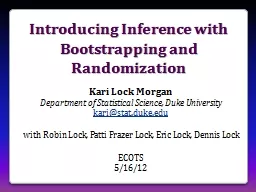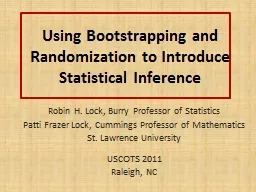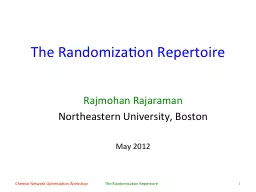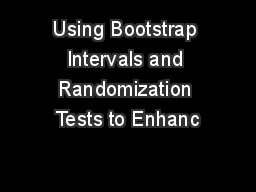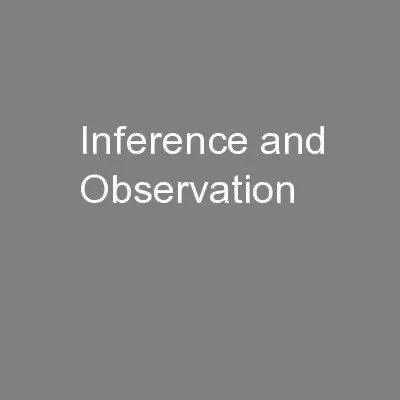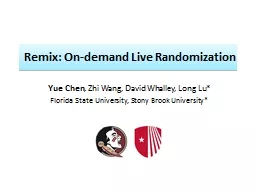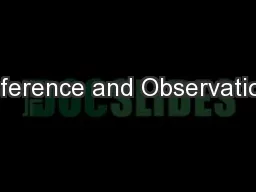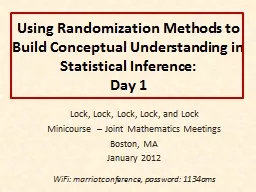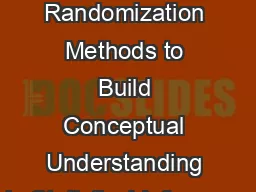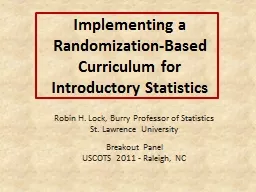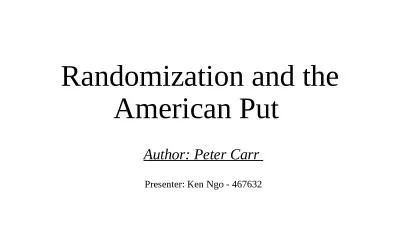PPT-Introducing Inference with Bootstrapping and Randomization
Author : mitsue-stanley | Published Date : 2016-05-31
Kari Lock Morgan Department of Statistical Science Duke University karistatdukeedu with Robin Lock Patti Frazer Lock Eric Lock Dennis Lock ECOTS 51612 Hypothesis
Presentation Embed Code
Download Presentation
Download Presentation The PPT/PDF document "Introducing Inference with Bootstrapping..." is the property of its rightful owner. Permission is granted to download and print the materials on this website for personal, non-commercial use only, and to display it on your personal computer provided you do not modify the materials and that you retain all copyright notices contained in the materials. By downloading content from our website, you accept the terms of this agreement.
Introducing Inference with Bootstrapping and Randomization: Transcript
Download Rules Of Document
"Introducing Inference with Bootstrapping and Randomization"The content belongs to its owner. You may download and print it for personal use, without modification, and keep all copyright notices. By downloading, you agree to these terms.
Related Documents

